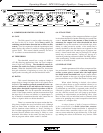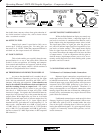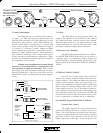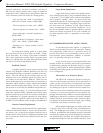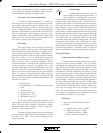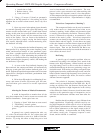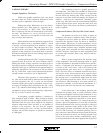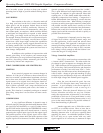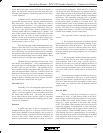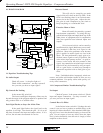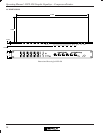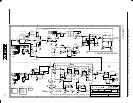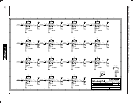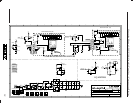
13
Operating Manual - DPX-100 Graphic Equalizer - Compressor/Limiter
signal before the gain control FET and then amplify it
again. Of course this results in less than ideal noise per-
formance and imposes a frustrating trade-off: less noise
= more distortion.
A number of VCA’s based on the exponential volt-
age-current characteristic of a bipolar junction transistor
have been used. One of the most common is called a
“transconductance amplifier”. Using the inherent match-
ing obtained by integrated circuit technology, these de-
vices have very predictable control characteristics.
Tracking within 1dB over a 40dB range is common. Not
only do the control characteristics match well from unit
to unit, but they can easily be made exponential (loga-
rithmic) so that even increments of control voltage pro-
duce even increments of gain change in decibels. The
response time is also very fast.
The problem with simple transconductance am-
plifiers is that, like FET VCA’s, they can handle only very
small signals so the noise performance is poor. A num-
ber of linearizing circuits have been devised to minimize
this problem, but even the best transconductance amplifi-
ers have an equivalent input noise of about -80dBv, which
compares poorly to straight linear amplifiers.
The best analog compromise to date is the “class
AB current ratio multiplier.” Early implementation of
this circuit used two matched pairs of transistors, one pair
of NPN’s and one pair of PNP’s. The problem here is
that excellent matched integrated NPN pairs were avail-
able, but integrated PNP’s were not. The PNP’s had to be
hand-tested and matched. Careful trimming was neces-
sary for low distortion and even minor temperature
changes made re-trimming necessary because of differ-
ing characteristics between the two types.
The Ashly VCA
The Ashly VCA is an integrated current ratio mul-
tiplier circuit. It has low noise (-90dBv), low distortion
(.05%), excellent response time and tracking and does
not suffer from thermal drift. The noise and distortion
are at state-of-the-art levels and the circuit is consistent
in mass production with minimal trimming and no hand-
selection of transistors.
Detectors
It would seem that, of the two components in a
compressor/limiter, the VCA is the more critical since the
audio passes through it and the detector only provides it
with a control voltage. Experience showed us that both are
crucial to the overall sound and that, if anything, the
detector’s performance is the harder to judge by conven-
tional measuring techniques. While the VCA is doing its
job if it has low noise and distortion, the detector must con-
stantly adjust the gain of the audio path in a manner which
keeps the level under control while sounding acceptable to
the listener. This constantly changing gain is a dynamic
action, while conventional audio measurements like noise
and distortion checks are Static (at a constant level). We
became painfully aware of this problem with some of our
earlier limiter prototypes which measured fine and sounded
terrible. This led us to use a purely subjective approach in
the design of the detector - we did a lot of listening to de-
termine what sounded good and what didn’t.
Two important features emerged from this re-
search:
1. We designed the detector to let the attack and
release times speed up as more and more limiting occurs.
The compression ratio also increases. This lets us main-
tain peaks fairly close to a constant ceiling level, but al-
lows the illusion of increasing loudness as input level
increases, thereby preventing complete loss of dynamics
when limiting.
2. We incorporate a double release time constant.
When release time was set slow with a single time con-
stant, transients such as mic “pops” caused a quick re-
duction in gain and a slow fade-up, making the action of
the limiter very obvious. With the double time constant,
release from gain reduction after a brief transient is al-
ways fast, with a slower release after a sustained over-
drive.
When choosing a compressor/limiter, you can see
that it is very important to listen to it in your particular
application and see that it sounds the way you want. There
are lots of these devices with seemingly excellent specs
which sound very different with real program material
applied to them.
Peak Or RMS
There are several ways of looking at a signal to
determine its level. A peak detector looks at the maxi-
mum voltage a signal reaches regardless of it’s waveform,
while an RMS (root mean square) detector looks at the
energy in a signal regardless of the short term voltage
levels. This makes a peak detector the correct choice for
preventing clipping, overmodulation, or tape saturation,
while an RMS detector can be used to restrict material to
a given loudness. When an RMS limiter is used to pre-
vent clipping, the result is unpredictable. For instance, a
flute and a snare drum which are limited to the same RMS
level might have peak levels as much as 30dB apart! Use
peak limiters to prevent clipping.



